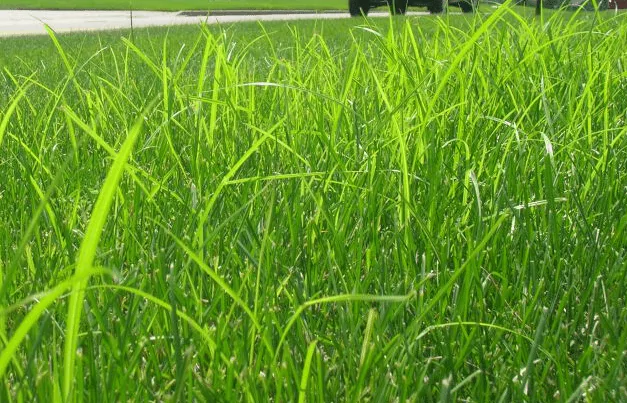Bermudagrass
Perennial, warm season grass; also called wiregrass. Grows up to 2 ft. tall; goes dormant in winter and turns brown. Spreads aggressively by strong, wiry stolons (above ground runners).
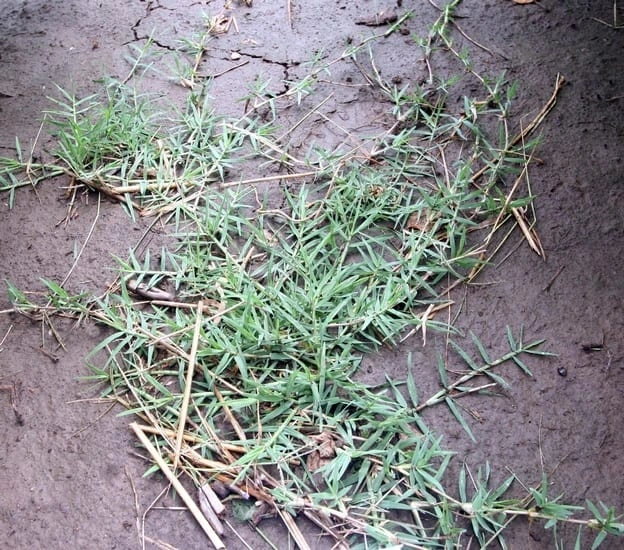
Clover
Cool season perennial that roots at nodes. Goes dormant in the winter. Low growing, less than 1 ft. high, leaves composed of three leaflets (trifoliate), most with a pale triangular mark. Each 1/2 in. flower head is a cluster of many white or pink-tinged, pea-like flowers. Reproduces by seed and creeping runners.
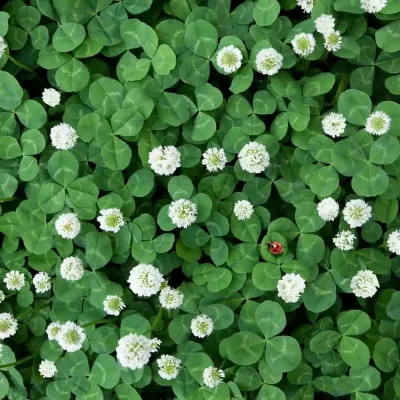
Common Chickweed
Winter annual that has smooth stems and leaves; can have several generations a year during cool wet seasons and forms prostrate dense patches in turf, landscape and vegetable gardens. Height 3-6″ in sun; up to 18″ in shade. Young leaves opposite, egg-shaped, pointed at tip. Five white petals, deeply lobed giving appearance of 10 petals. Similar to mouseear chickweed, but not perennial or hairy. Seed dispersed in spring; germinates in fall; remain viable up to 10 years.
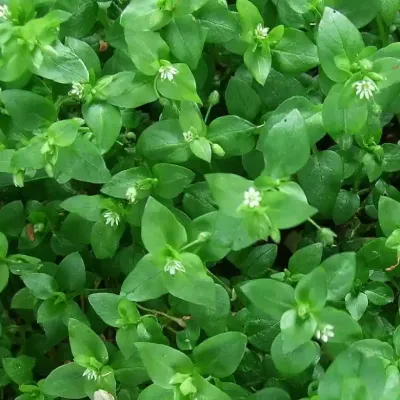
Crabgrass
Summer annual. Grows up to 2 ft. tall; decumbent growth habit; swollen nodes. May root at nodes. Dies after the first frost in the fall. Reproduces by seed. Seeds germinate from spring through late summer.
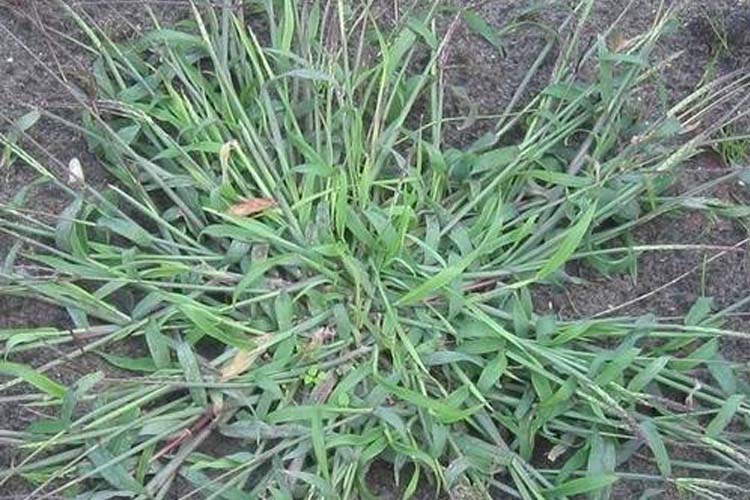
Dandelion
Perennial; rosette of leaves 3- to 10-inches long with a high degree of leaf variability ranging from deeply cut to almost entire. Milky sap when broken. Yellow ray flowers borne on leafless, hollow stalks. Reproduces by wind-blown seed; up to 15,000 seeds per plant; fleshy taproot survives cold weather to grow in spring.
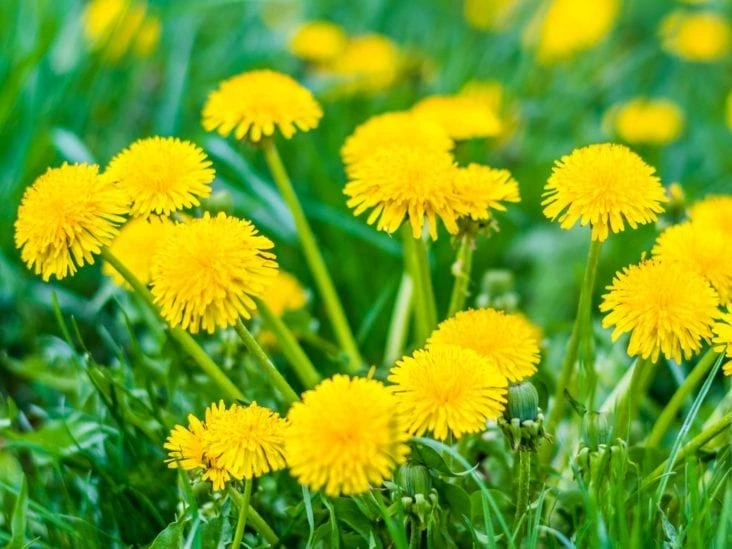
Deadnettle
Winter annual noticeable in early spring when the light purple flowers are in bloom. Dies out in late spring. Square stems. Leaves opposite, triangular, pointed, and overlapping and crowded near top of stem. Leaves often with purple coloring. Pinkish-purple lipped flowers borne at top of plant. Fibrous root system doesn’t creep along the ground. Produces seed in the spring; seed germinates in the early fall or early spring.
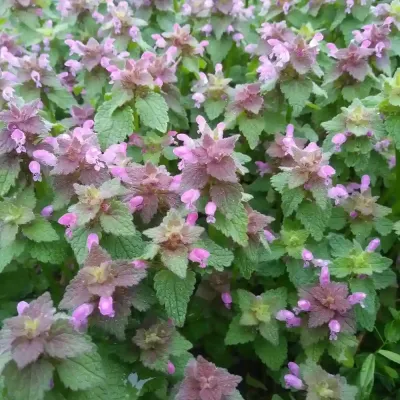
Ground Ivy
Perennial. Low, creeping plant that roots at nodes; distinct odor when crushed; stems square in cross-section; leaves opposite, scalloped, rounded to kidney-shaped and 1/2 to 1 1/2 in. in diameter. Reproduces mostly by creeping stems that root at the node; less commonly by seeds; flowers lipped, purplish-blue in whorls in upper leaf axils.
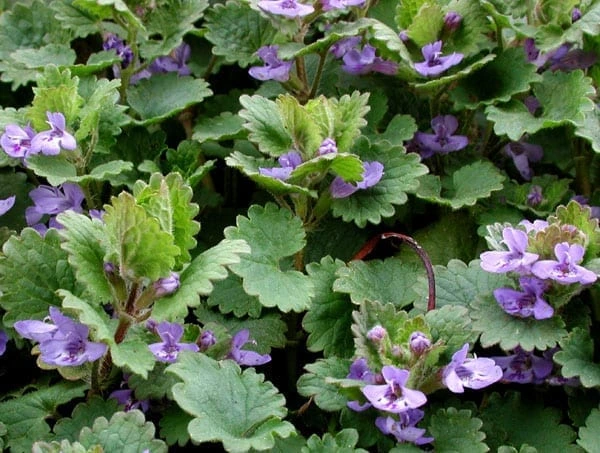
Hairy Bittercress
Primarily a winter annual. Basal rosette of pinnate leaves; 1-3 pairs of leaflets with terminal, larger leaflet; tiny, 4-petaled white flowers in clusters at top of stems, followed by slender, upright seed capsules. Reproduces by seed; when mature capsules pop explosively.
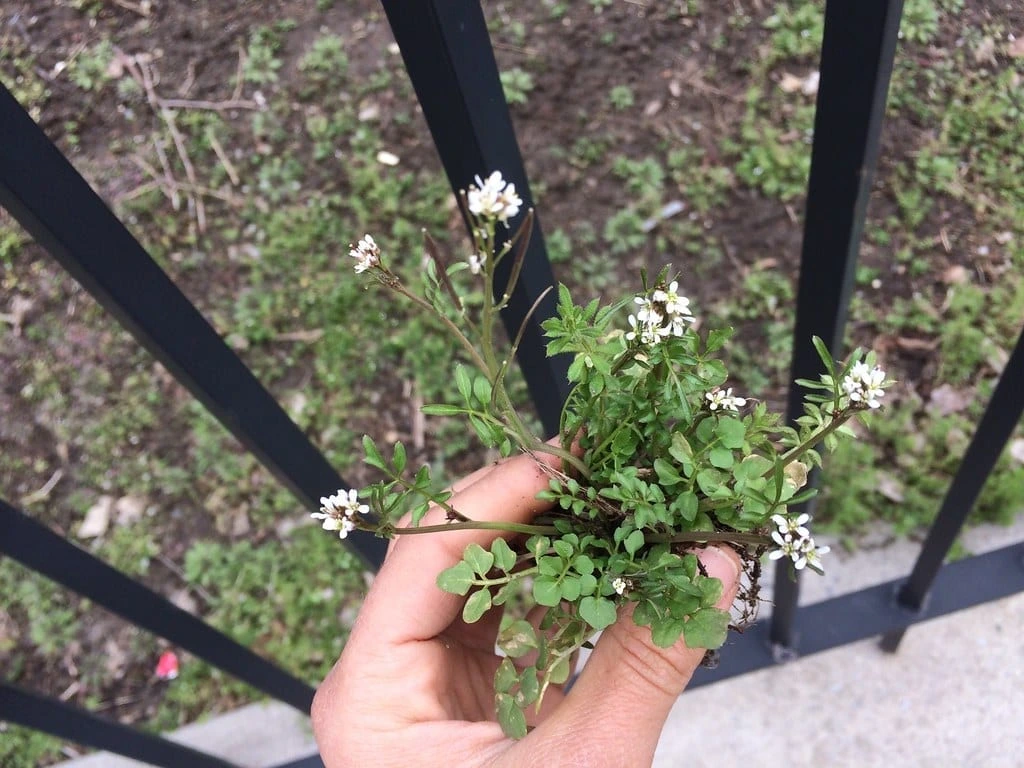
Henbit
Winter annual. Less than 12-in. tall; noticeable in spring for pink to purple flowers. Square stems; leaves opposite, scalloped, and rounded; lower leaves with petioles, upper leaves half encircling the stem; pinkish-purple, lipped flowers in whorls in the axils of upper leaves; fibrous root system that does not creep along the ground. Reproduces by seed germinating in early fall or early spring.
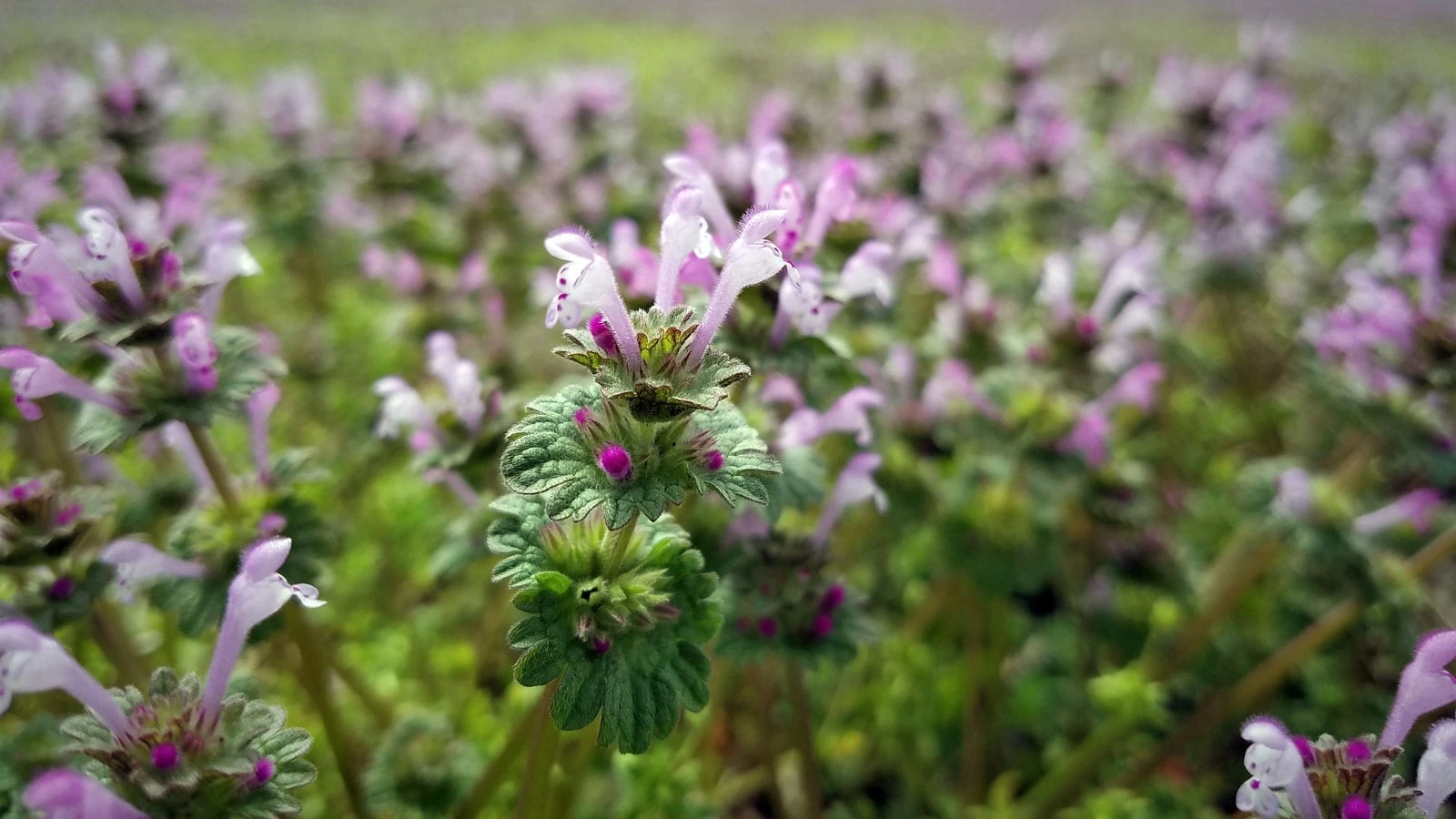
Japanese Stilt Grass
Invasive summer annual. Bright green grass has silver hairs down the center of its short bamboo-like blade; grows up to 2 ft. tall. Has a weak and shallow root system. Roots at nodes; elongates quickly in fall, then produces seed banks which stay viable in the soil for many years. Dies back in the fall. Seeds germinate in late winter/early spring. The sticky, tiny seeds can be spread into other areas on the fur and hooves of animals (deer), by water, shoes, and clothes.
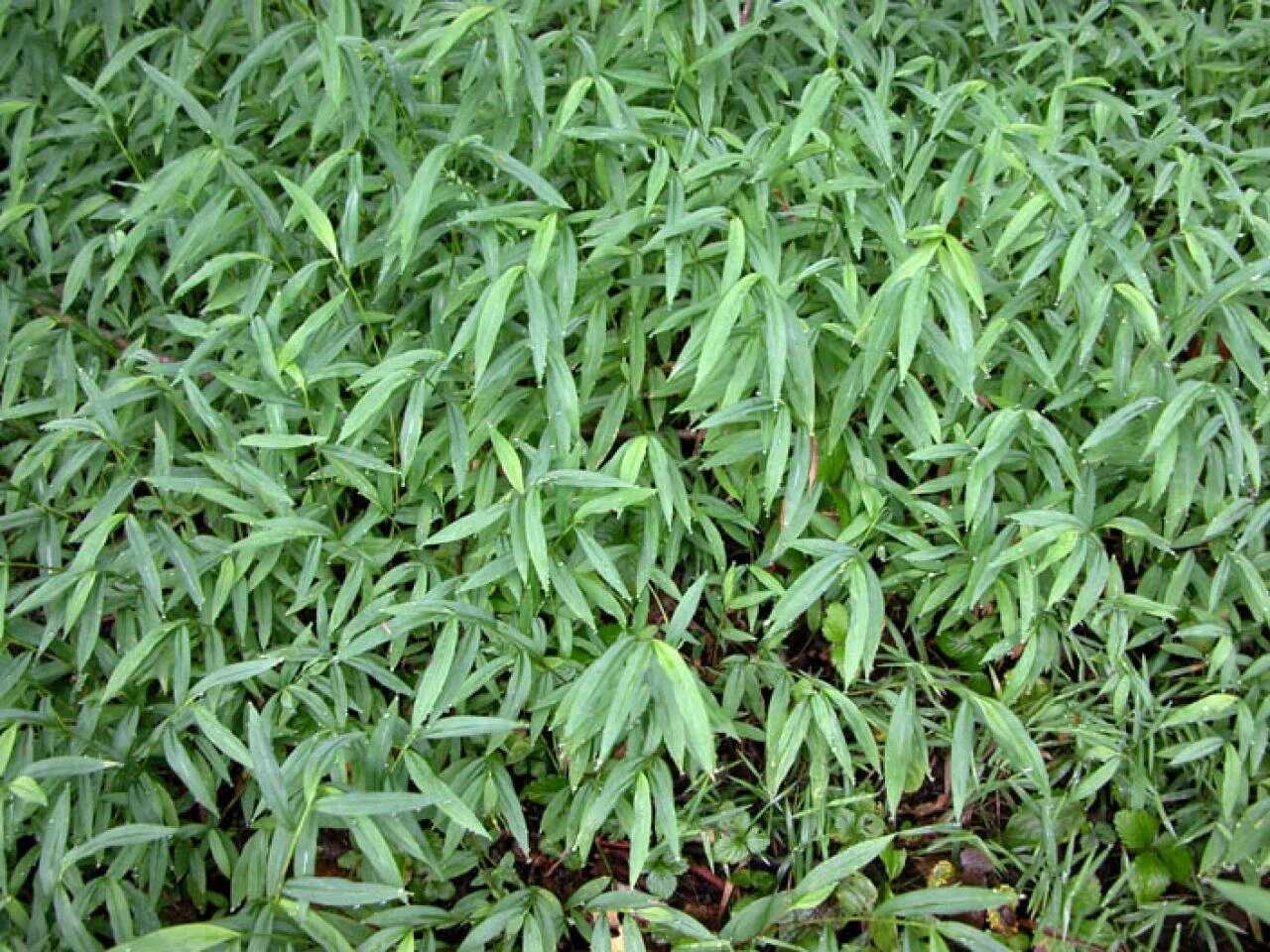
Knotweed
Summer annual broadleaf weeds that spreads by seed. Is low-growing and has wiry stems that form a mat. Leaves vary in shape depending on the maturity of the plant. Juvenile leaves are dark green and are long and slender. Older leaves are smaller and are duller green in color. Leaves are alternate along the stem. Small white or yellow flowers are inconspicuous and are located at the leaf axils. Blooms midsummer through the fall.
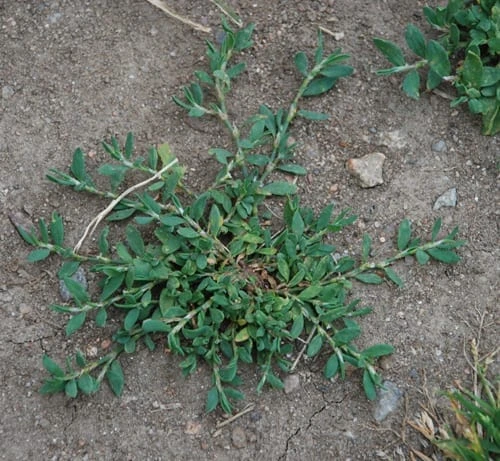
Lespedeza
Common lespedeza, also known as Japanese clover, (Kummerowia striata, syn. Lespedeza striata) is prostrate summer annual that forms 15-18 inch patches. The stems are wiry. It has dark green trifoliate (arranged in threes) leaves with three oblong, smooth leaflets. Leaflets have parallel veins nearly at right angles to a prominent mid-vein. Its leaves have smooth edges and a short spur at the tip of each leaflet. Flowers in late summer with small pink to purple, single flowers found in leaf axils on most of the nodes of the main stems. It grows very low to the ground and chokes out thin turf.
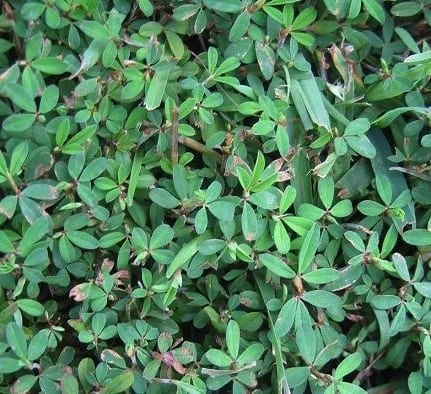
Poa Annua (Annual Bluegrass)
Winter annual less than 1-ft. tall. This type of grass can die out in the summer months. Bunching does occur as well. This grass reproduces by seed; it will enlarge by tillering.
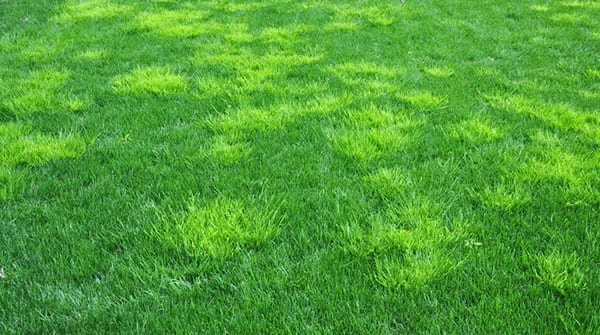
Spurge
Summer annual broadleaf weeds that spreads by seed. Spurge is low growing. The leaves are oval in shape, small, and opposite along the stem. There is usually a red spot in the center. Another distinct characteristic is the stem contains a milky sap that oozes when the stem is broken. Flowers from early-summer through the fall.
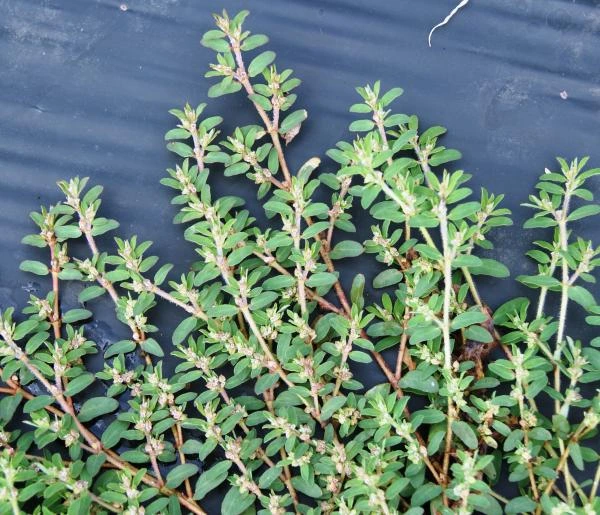
Speedwell
Annual and perennial species; dense patches noticeable in lawns, especially in early spring. All are creeping, prostrate plants with small, rounded leaves, toothed at the margins; flowers light blue to white with 5 petals; fruit a heart-shaped capsule. Reproduces by seed.
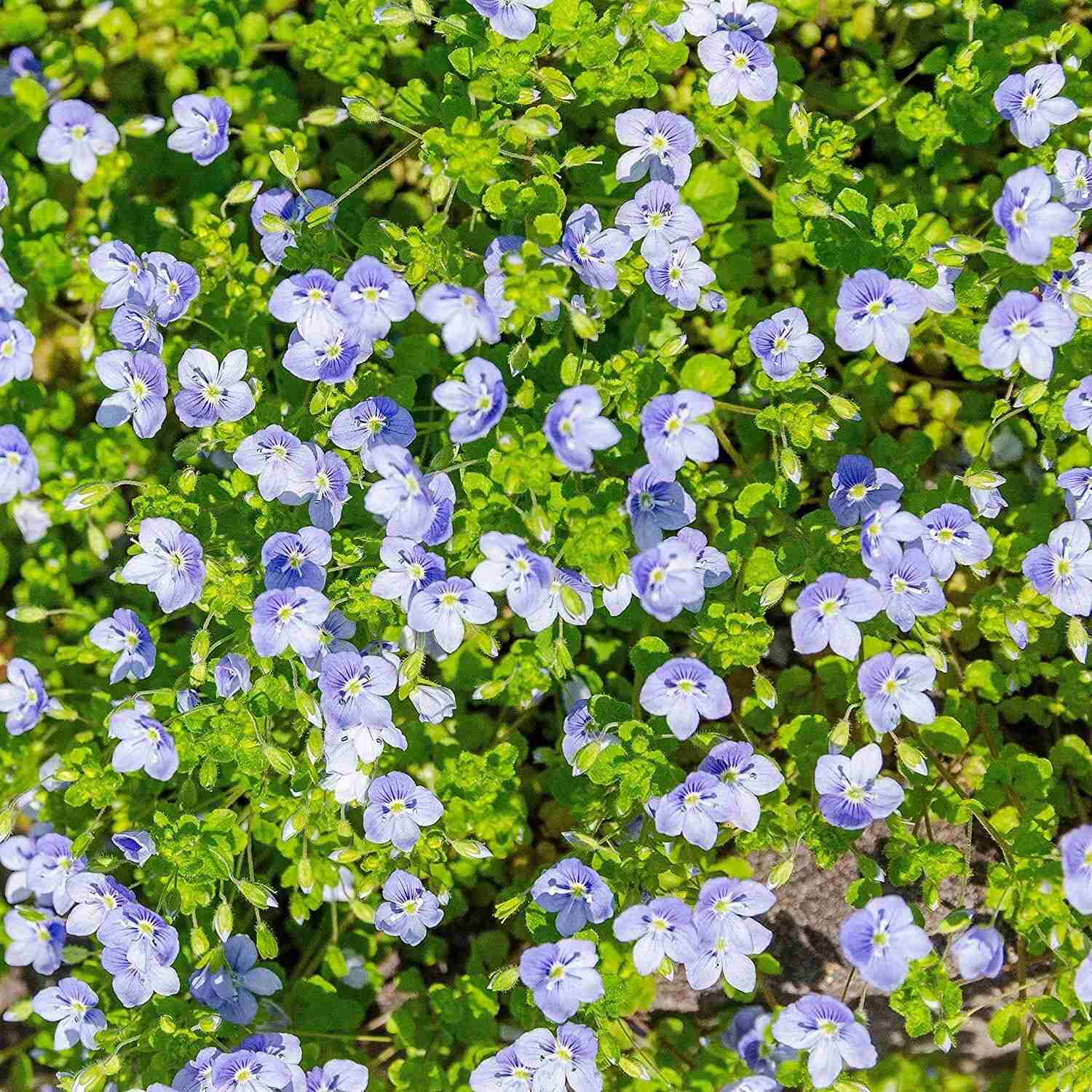
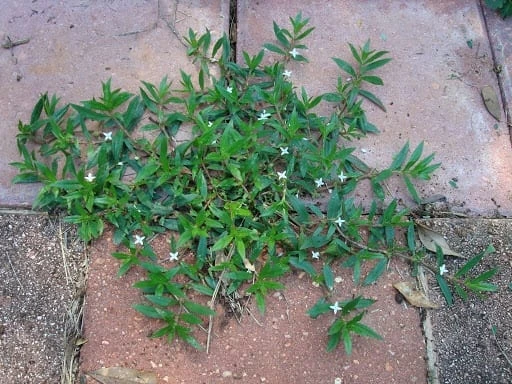
Wild Garlic / Wild Onion
Perennial from bulbs. Grass-like, thin leaves. Wild garlic leaves are round and hollow, while those of wild onion are flat and solid. Produces clusters of many underground bulbs when mowed.
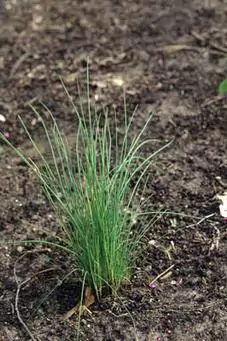
Wild Violet
This is a perennial. Low growing < 1-ft. from basal crown; it has heart-shaped leaves; flowers that can be blue to violet, and occasionally white, on leafless stalks. This reproduces by seed and short, branching rhizomes.
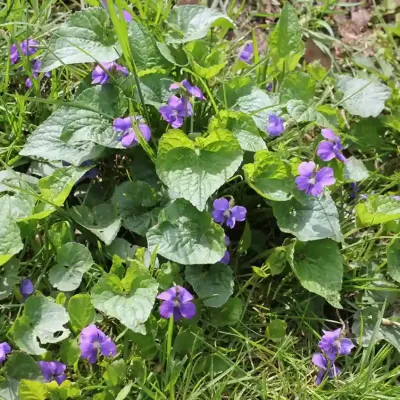
Woodsorrel
Yellow woodsorrel, a perennial weed, is usually first noticed when it forms yellow flowers from May through September. The stems are green to purple, erect, branching from the base with alternate leaves that have long petioles. Leaves are clover-like with 3 heart-shaped leaflets. Trifoliate leaf arrangement similar to white clover or black medic (which it is often mistaken for) but leaflets are distinctly heart-shaped; The yellow flowers are borne on long stalks arising from the leaf axils. The seeds are formed in erect capsules that when ripe explosively eject seeds as far away as 12 feet. The root system is shallow and fibrous along the length of long slender white to pink rhizomes. Creeping woodsorrel (Oxalis) is more prostrate, frequently roots at the nodes and often has leaves with a purple tint, unlike Oxalis stricta.
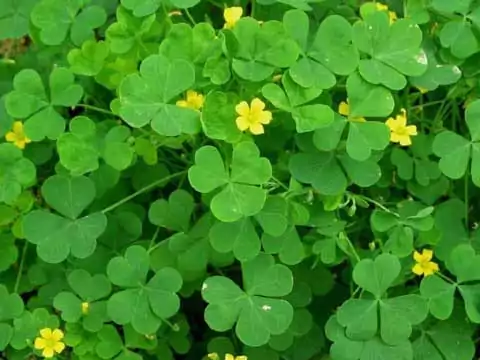
Yellow Nutsedge
Perennial. Leaves shiny, yellow-green, narrow, and grass-like; stems are 3-sided, triangular in a cross section. This reproduces from small nutlets (tubers) attached to rhizomes/possibly seed.
